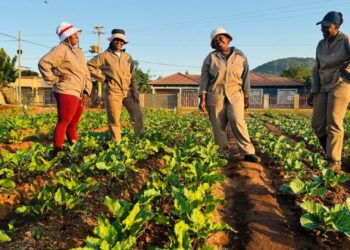Pesticides are essential for protecting crops, but how you move them to, on, and from your farm matters just as much as how you store them. Every Saturday, Food For Mzansi shares practical tips for farmers and farm workers and this week, it’s all about safe pesticide transportation according to the law.
If a pesticide has a UN number printed on its label, it’s classified as a regulated or dangerous good, according to CropLife South Africa. While commercial transport of these products is heavily controlled, bona fide farmers get exemptions under the National Road Traffic Act — as long as certain conditions are met.
First, the pesticides must not be sold or used in combination with other substances for resale. The journey should be 250 kilometres or less, with no more than 50 kilometres on main roads like the N1, N2, or N3.
Quantity limits also apply: 1 000 litres for liquids or 1 000 kilograms for solids. If you’re transporting both forms together, the total cannot exceed 1 000 units, where one unit equals one litre or one kilogram.
For example, transporting 500 kilograms of solid pesticide and 450 litres of liquid pesticide is fine, since it totals 950 units — under the 1 000-unit limit. Exceed these limits, and all commercial transport rules kick in, including legal liability.
Loading pesticides the right way
Loading pesticides onto a vehicle requires a clear, obstruction-free area and the use of working equipment, like forklifts, with employees wearing proper PPE. Products must be upright, secure, and neatly arranged, avoiding overloading.
Keep animal feed, fertilisers, food, and fuels separate from pesticides. Why? Certain pesticides may give off fumes that can be absorbed by solid materials, potentially contaminating livestock feed, compromising fertilisers, and making food unsafe.
Fuel in the same area is a fire hazard. Even your farm dog should stay clear of pesticide handling or transport areas — a simple step to protect their health.
Offloading safely
When offloading, the same principles apply. Use a spacious, obstruction-free area with all required PPE. Equipment should be in good condition, and products must be handled carefully to avoid spills or accidents.
Safe pesticide transportation is about planning, organisation, and following the rules. From knowing quantity limits to separating products properly and keeping everyone trained on safety procedures, informed practices prevent accidents, protect your team, and safeguard the environment.
- Next Saturday, we’ll break down how to read a pesticide label like a pro, so you know exactly what you’re handling and how to stay safe on the farm.
READ NEXT: Safe pesticide storage: Protect your farm, people and planet















